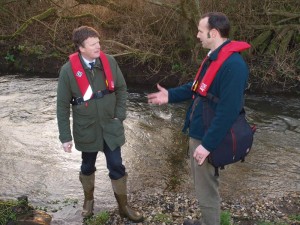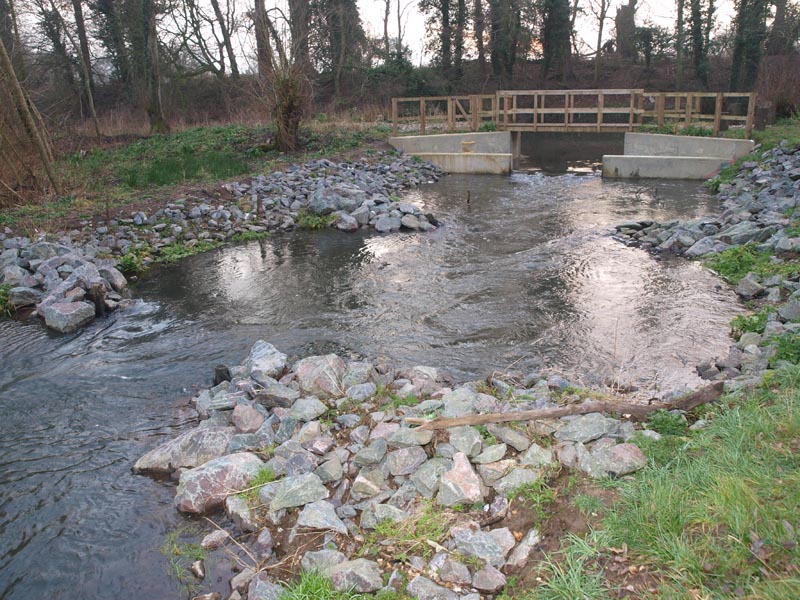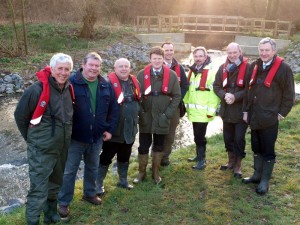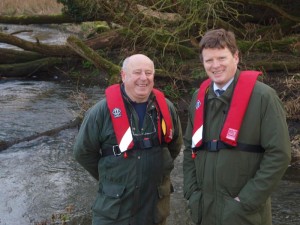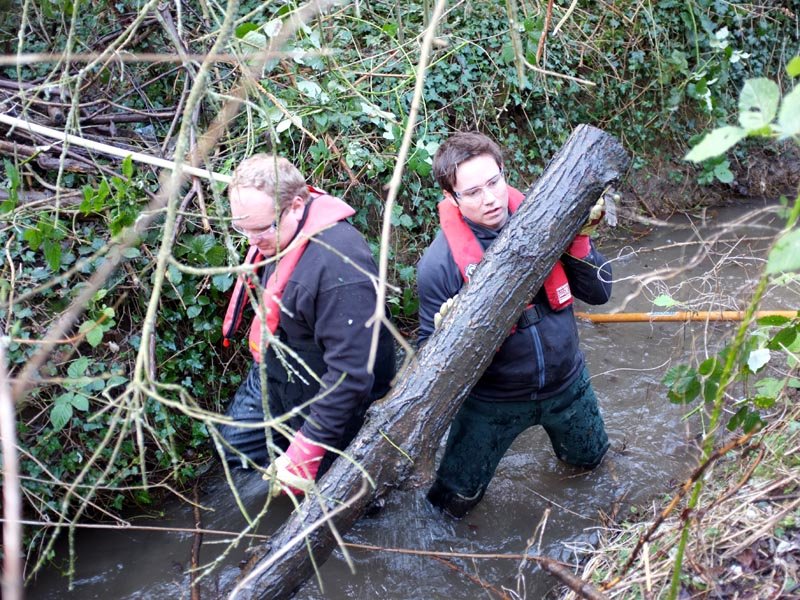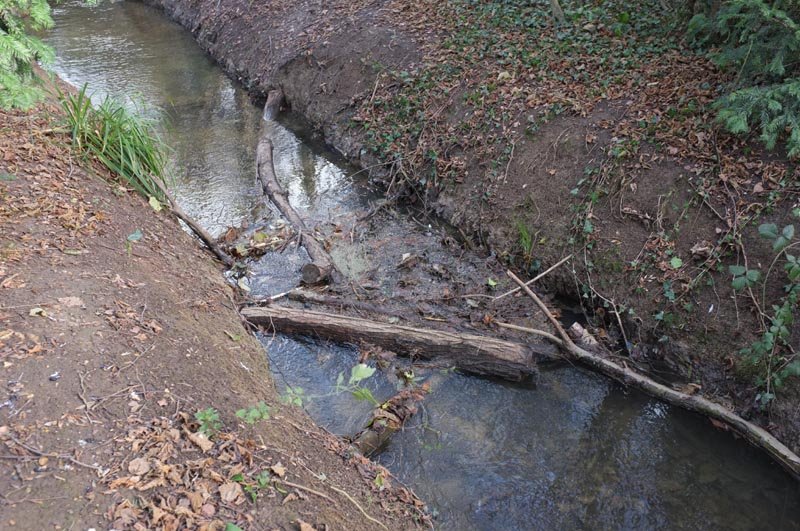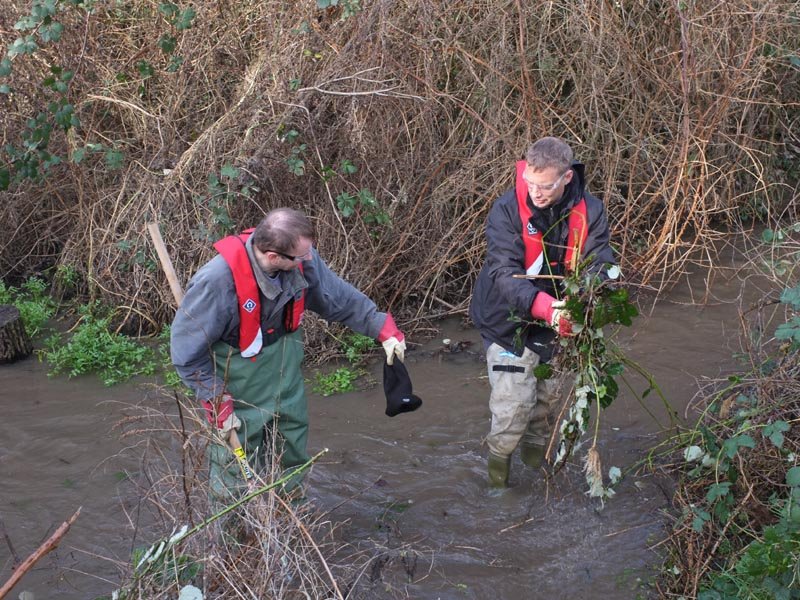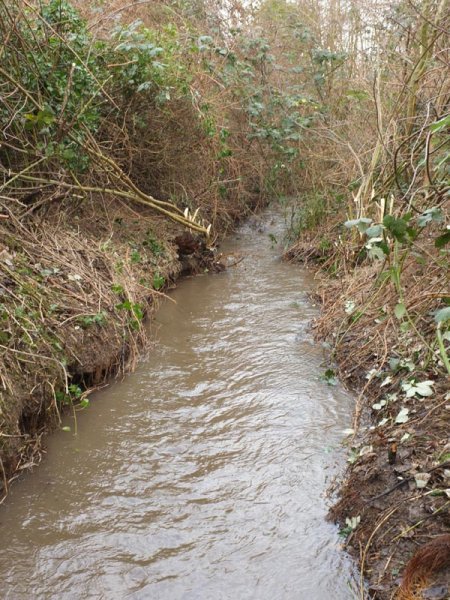-
- Buy a UK rod licence: EA Link
- 0800 807060 EA Hotline, Pollution, Poaching
- Thames Region River Levels
- Thames River Conditions
- Thames Temps and Clarity
- Thames Fishing Byelaws
- Thames Annual Tidefest
- Thames Record List
- Thames Eel Monitoring
- EA Annual Fisheries Report
- EA Flood Warnings
- Thames Sewage Discharge Notifications
- Thames Sewage Events
- Thames Tideway Tunnel
- River Thames Scheme: Reducing flood risk from Datchet to Teddington
- Martin Salter: Fighting for Fishing Blog
- Duncan Charmans World of Angling Blog
- Angling Trust
- Water and sewerage companies in England: environmental performance report 2013 – 2016
- EA Pollution incidents: 2014 evidence summary
- EA Pollution incidents: 2015 evidence summary
- River Crane and DNR Fisheries Impact assessment
- Links
Recent Tweets
Error retrieving tweetsNews Archive
WWF says EU plans to add 15 new chemicals to the current water pollutants list falls short
 The European Commission has published its delayed proposal to add 15 new chemicals to the current list of 33 dangerous water pollutants that need to be tackled across the EU most urgently.
The European Commission has published its delayed proposal to add 15 new chemicals to the current list of 33 dangerous water pollutants that need to be tackled across the EU most urgently.
The WWF has criticised the Commission’s proposal saying falls short in specifying by when and how existing EU policies such as REACH regulation on chemicals or pesticides legislation should be used to control pollution by these chemicals.
Sergey Moroz, Senior Water Policy Officer at WWF European Policy Office said:
“Without clear timelines and triggers for action under related legislation, EU will fail to stop discharges, emissions and losses of hazardous chemicals, as required by the Water Framework Directive as well as EU’s international commitments. The presence of highly hazardous chemicals in our waters is a serious threat to aquatic life and human health. The European Parliament and EU ministers will have to strengthen today’s proposal to make European waters safe and healthy.”
The listed substances range from industrial and household chemicals to pesticides and pharmaceuticals that can end up in our waters as the result of manufacturing processes, agricultural practices or use in our homes. The list includes toxic substances such as cypermethrin, (an insecticide still used in Europe but banned in Canada due to its toxicity to lobsters), chemicals which can cause cancers such as dioxins or impair reproduction in wildlife and humans such as PFOS (perfluorooctane sulfonic acid). Most hazardous of these chemicals are to be phased out and banned from the market, while for the others the proposal sets limits in their concentration in water.
WWF also believes that the listing of new emerging pollutants needs to be improved. The European Environment Agency recently warned that more needs to be done to address the water pollution in Europeans ecosystems, including pollution at source.
Ninja Reineke, Senior Policy Officer Chemicals/Water adds:
“There are hundreds of toxic chemicals out there, posing a potential threat to European waters and human health. Currently monitoring is done only on a very limited number of substances. This needs to be expanded to address new risky pollutants.”
The Proposed EU Directive
31/01/2012
Proposal for a revised directive of the European Parliament and of the Council on Priority Substances in the field of water quality
What are Priority Substances?
Priority Substances are chemical pollutants that pose a significant risk to (or via) the aquatic environment at EU level. There are currently 33 of these Priority Substances listed in Annex X of the Water Framework Directive (WFD). Member States have to monitor their concentrations in surface waters and meet the Environmental Quality Standards (EQS) set for them within a certain timeline, unless they meet conditions that allow them to apply exemptions.
One of the environmental objectives of the Water Framework Directive is to achieve "good chemical status" for EU waters. In practice this means achieving the EQS for priority substances and for eight "other pollutants" already regulated under earlier legislation.
What are Priority Hazardous Substances?
Priority Hazardous Substances are a subset of Priority Substances, of which they are the most dangerous. They are characterised by their persistence, bioaccumulation and toxicity, or by an equivalent level of concern. Because of these dangerous properties, the WFD requires their emissions to the aquatic environment to be phased out within 20 years of their designation as "priority hazardous".
How were the additional substances in the proposal selected?
The selection was made on the basis of a science-based prioritisation procedure in line with the principles set out in Article 16(2) of the WFD.
Substances identified under other legislation (such as chemicals, plant protection products, and biocides) as being of potential concern to the aquatic environment were shortlisted for further consideration. In addition, the outputs of two prioritisation processes, based on monitoring and modelling data for some two thousand substances, were used to identify other substances posing a risk. The substances in Annex III of the Environmental Quality Standards Directive (EQSD), if not already shortlisted, were added, along with substances of particular concern to Member States. The combined outputs were reviewed by experts from the Commission, Member States and stakeholders to identify the substances for which the evidence was considered sufficient to designate them as Priority Substances – based essentially on their hazardousness and their presence in the aquatic environment.
More details about this process can be found in the Commission Staff Working Paper accompanying the report to the European Parliament and the Council.
What are the additional substances used for and why are they of concern?
The following table provides more information on the proposed new Priority Substances:
17 alpha-ethinylestradiol (EE2)
Pharmaceutical; synthetic steroid hormone used mainly in oral contraceptives.
Endocrine disruptive; prolonged exposure to low concentrations of EE2 has been shown to cause sex changes, alterations in reproductive capacity, and ultimately population collapse in fish
17 beta-estradiol (E2)
Steroid hormone: excreted naturally (approx 90%) in human and livestock urine but also (<10%) as a result of pharmaceutical use (of which 90% from Hormone Replacement Therapy).
Endocrine disruptive; chronic studies show effects on sexual development and fecundity in fish.
Aclonifen
Herbicide, used on a range of arable crops.
Toxic to a range of aquatic organisms.
Bifenox
Herbicide, used to kill broadleaf weeds in cereal crops and grassland.
Toxic to a range of aquatic organisms.
Cybutryne (Irgarol®)
Biocide used as antifouling agent in coatings for boat hulls etc.
Toxic; degrades only slowly and main degradation product also toxic; persists in sediments.
Cypermethrin
Insecticidal pyrethroid plant protection product and biocide, used in arable farming, salmon farming, sheep dipping and wood preservation.
Toxic to a range of aquatic organisms. Binds to sediment. Use in the marine environment is authorised in a few countries of the world but prohibited in Canada where suspicion exists regarding a possible link with the death of lobsters.
Dichlorvos
Organophosphorus insecticide and biocide, used in grain/nut stores, insecticidal sprays/strips.
Use – a few kg to a few tonnes/yr in different Member States; probably closer to lower figure since 2008 when decision on non-authorisation as a plant protection product took effect.
Toxic particularly to aquatic invertebrates and fish; possibly carcinogenic to humans.
Diclofenac
Pharmaceutical, used as Non-Steroidal Anti-Inflammatory Drug (NSAID).
Toxic, directly (e.g. chronic studies show effects on fish), and via secondary poisoning, e.g. vultures in India affected by veterinary use in cattle.
Dicofol
Organochlorine former plant protection product and biocide, until recently authorised for use on fruit and vegetable crops.
Possibly residual use.
Toxic; similar to DDT, recommended for designation as POP (Persistent Organic Pollutant under the Stockholm Convention); possibly carcinogenic to humans, possibly endocrine disruptive.
Dioxins (and dioxin-like PCBs)
Dioxins: by-products of thermal combustion
PCBs: chlorinated organic compounds formerly used to manufacture electrical equipment etc.; some also produced by combustion.
PBTs (persistent, bioaccumulative and toxic substances), POPs (Stockholm Convention and CLRTAP). Some forms probably carcinogenic to humans; other possible effects include endocrine disruption, impairment of immune system, nervous system, reproduction. Limits already set for presence in feed and food.
HBCDD
Industrial chemical, used as flame retardant, especially in polystyrene, including insulation boards.
PBT, SVHC under REACH, recommended POP. Possibly toxic to reproduction in humans.
Heptachlor/
Heptachlor epoxide
Organochlorine insecticide, no longer authorised but secondary emissions possible.
POP; very toxic to aquatic organisms; possibly/probably carcinogenic to humans, possibly endocrine disruptive.
PFOS
Industrial chemical, used in hydraulic aviation fluids, photography, electroplating.
Present in many existing products, especially textiles.
PBT, POP. Toxic to animals especially mammals. Possible carcinogen in humans; possible effects on thyroid function.
Quinoxyfen
Fungicide, used mainly on cereals, grape vines.
PBT and vPvB properties. Accumulates particularly in sediments.
Terbutryn
Biocide, used especially in coatings for buildings, as preservative.
Toxic especially to algae and aquatic plants.
No measures are included in the proposal itself. Existing EU and/or international legislation – on chemicals, plant protection products etc – is expected to reduce the emissions of many of the substances. Inclusion of the substances in the Priority Substances list means that monitoring data would be obtained to provide feedback on the effectiveness of existing legislation.What action would have to be taken as a result of the proposal?
Member States would have to take it into account in preparing and implementing their second River Basin Management Plans under the WFD, which are due to be adopted in 2015. They would have to ensure that the additional substances are monitored, and that the Environmental Quality Standards are met by 2021. This could mean taking measures at national or local level.
If additional measures taken at local or national level proved insufficient to meet the EQS, additional EU measures might need to be considered, as required by Article 16(6) of the WFD.
What would be the expected impacts?
An impact assessment was conducted to support the proposal. The conclusion was that the expected benefits would outweigh the costs.
Benefits
There would be positive impacts in terms of the quality of surface waters and thus potential for positive effects on the health of the environment, wildlife and human beings. Our knowledge about pollution levels and the effectiveness of measures taken by water and other policies to reduce emissions to the environment would be improved.
Costs
No specific measures at EU level are proposed. Member States can select the most cost-effective measures that best fit their national/local situation. Nevertheless, the impact assessment considered a range of potential measures that Member States might take, including those related to the improvement of urban waste water treatment in certain areas (especially with a high population), measures to reduce emissions at source and so forth.
Since most of the substances would not be designated Priority Hazardous Substances, there would be no need to find substitutes for them. The substances that would be designated as Priority Hazardous Substances are already, or will probably soon become, subject to controls under other legislation, and in most cases substitutes are available or are likely to be developed within the 20-year timeframe for phasing out emissions. The inclusion of a substance in the WFD list provides valuable information about the effectiveness of the measures taken by other policies to reduce emissions.
Some monitoring costs would be incurred for the additional substances, but they would be minor in relation to the existing overall monitoring costs. The Commission proposal contains additional flexibility to allow Member States to reduce the monitoring of certain substances (that due to their characteristics do not need frequent monitoring), and therefore partially offset the new monitoring costs.
Would the Commission proposal give rise to disproportionate costs in the Member States?
The impact assessment concluded that costs would not be disproportionate.
Where local conditions would give rise to disproportionate costs or it is technically not feasible to reach the objectives, Article 4 of the Water Framework Directive allows Member States to apply exemptions from meeting good chemical status, provided all relevant conditions in the Directive are met.
What would be the implications of including pharmaceuticals?
As is required for all priority substances, Member States would have to meet the usual monitoring requirements. Analysis of the data gathered should help them to identify any necessary action to meet the respective Environmental Quality Standards. No measures are proposed at EU level.
There should be no impact on the freedom of doctors to prescribe or of patients to choose and obtain the listed pharmaceuticals. Nor does the proposal question their medicinal value.
The proposal is consistent with the Commission's commitment to strengthen pharmacovigilance and with the greater knowledge now available of the risks posed to the aquatic environment by some pharmaceutical substances.
What would be the difference between the Watch List and the Priority Substances List?
EU waters currently contain thousands of chemicals about which there is very little information regarding levels and occurrence. They may or may not pose risks to the environment or human health, but in the absence of regulation they are not routinely monitored. The proposal includes a mechanism to allow monitoring data to be gathered EU-wide for substances of possible concern over approximately one or two years, to support decision-making on the risks posed by those substances. No EU standards or phase-out obligations would apply to the substances on the Watch List, nor would they have to be monitored as widely as the Priority Substances. The information obtained would feed into the subsequent review of the Priority Substances list.
What are the substances "behaving as ubiquitous PBTs" that are mentioned in the proposal and subject to special provisions? Why are those provisions needed?
Several substances that are persistent, bioaccumulative and toxic occur very widely in the aquatic environment. This is largely due to past use, as the use of most such substances is no longer allowed or severely restricted. Some such substances may still be authorised however, for specific uses for which an appropriate substitute is not yet available. Moreover, some of the substances are being emitted from products that are still in use and were manufactured before the substances were regulated, or from those that are disposed of as waste. Others can potentially be transported by long-range atmospheric transport from outside the EU, or may be included in products imported from third countries.
Despite the current restrictions, their characteristics mean that these substances could remain at concentrations above the standards set for them for long periods, especially if they have accumulated in sediment and/or living organisms in the aquatic environment. The concentrations of these substances are slowly decreasing due to current measures (e.g. substitution by other substances and hence elimination of emissions). In most cases there is little that Member States can do to speed up the reduction of the concentrations, on top of the measures that have already been taken (in many cases at EU level).
The Commission proposal would allow Member States to:
-
Reduce the monitoring effort for these substances. As their concentrations are likely to change only very slowly over time, it is enough to monitor them less frequently and less intensively than other substances. Member States would be allowed to reduce monitoring only if they already have a robust information base about the extent of pollution by these substances.
-
Allow separate presentation by Member States of the concentrations of substances behaving as ubiquitous PBTs. This is important because the slow improvement seen for these substances should not hide improvements achieved for other substances, for which the measures that would be taken would relatively quickly achieve the standards set. The improvements would be hidden because the Water Framework Directive definition of good chemical status requires all standards to be met, therefore if one fails, the status is not met.
What happens next?
The proposal is being forwarded to the EU Council of Ministers and the European Parliament for their consideration (discussion and adoption).
For more information, Europe website:
http://ec.europa.eu/environment/water/water-dangersub/pri_substances.htm
Plans to extend EU list of dangerous water pollutants 'fall short', says WWF
River Wensum Restoration Scheme chalks up success
A restored section of the River Wensum is now teeming with trout and other species typical of a chalk stream thanks to a major restoration scheme.
Just over a year ago the Environment Agency reinstated a meander loop at Great Ryburgh Common that had been bypassed and left high and dry by engineering works in the 1950s. Once the bypass channel was plugged and the old channel de-silted, the river flowed again along its original winding course.
Electric-fishing surveys in the meander loop channel have shown excellent results, with 384 fish of 11 species captured. These included good numbers of native brown trout, as well as legally protected species such as bullhead and brook lamprey.
The previous year’s electric-fishing results from the old straightened channel yielded only 31 fish representing 8 species.
Great improvements in the river ecosystem have also been seen, with a number of typical chalk stream plant species having colonised the new channel in just over a year. These include water starwort, lesser water-parsnip and whorl-grass, plants for which the river is designated.
At the same time, the gravel bed of the river was restored after much of it had been removed by past dredging. Wildlife in the gravel now includes species typical of “natural” free flowing gravel bed sections which are rare on a local scale. The aquatic life stages of over 15 species of mayfly, caddisfly and stonefly were found, indicating a healthy invertebrate community, good water quality and, importantly, good habitat variability as a result of the restoration works.
Dr Rob Dryden, Technical Specialist for the Environment Agency’s Fisheries and Biodiversity Team, said: “We are delighted with the monitoring results, which show clearly how river restoration can improve local habitat quality for a wide range of fish, plants and other wildlife”.
Tim Nevard, a Trustee at Pensthorpe said “We’re thrilled with the outcomes of reinstating the ‘Meander Loop’. The Wensum is internationally important and the Environment Agency is to be commended for planning and implementing this exemplary project, entirely in keeping with the philosophy of our nature reserve”.
The River Wensum Restoration Strategy, developed by Natural England in partnership with the Environment Agency, to remedy the physical modifications the Wensum has experienced as a result of past land drainage and industrial activities. The strategy aims to work with landowners and other partners to return the river, which is nationally and internationally designated for its wildlife, to a state which can sustain the wildlife and fisheries typical of a Norfolk chalk stream.
The strategy links to other initiatives which aim to improve the ecological condition of the river by tackling the impacts of siltation and water abstraction.
Hydropower Impacts at Kelham Island on the River Don
Planning application has been granted for a micro-hydro power scheme in Sheffield, England. Thousands of similar sites are earmarked for hydro development across the UK. Developers and politicians are overlooking the serious damage the schemes can cause to fragile river habitats and are supporting schemes that generate only tiny amounts of energy in a misguided rush to all things renewable.
This film looks at the Kelham Island site on the river Don in Sheffield and highlights the broader ecological concerns that are being thrown aside and features the Don Rivers Trust and Paul Gaskell from the Wild Trout Trust.
Kelham Island Hydro from Waterfeature on Vimeo.
The Social Benefits of Angling – Launch of New Report
A landmark research report to be launched today by the Minister for the Natural Environment and Fisheries, Richard Benyon MP, has lifted the lid on the role that angling plays in our communities.
The three year research programme by Substance has surveyed and interviewed thousands of anglers and demonstrates the valuable contribution angling makes to communities by improving the environment, helping young people gain new skills and contributing to the local and national economy.
The report has been welcomed by the Angling Trust who called for a more joined up approach in government to maximise angling's social impact.
Mark Lloyd, Angling Trust Chief Executive said: 'This work, by the independent and highly-respected research team at Substance, provides invaluable evidence that angling is really important to millions of people and their communities. What is clear is that anglers not only protect and improve the water environment, but that their sport plays a vital role in contributing to well being, social cohesion and keeping young people out of trouble. We call on the Home Office, and the health and education departments to embrace angling as a mechanism for improving wellbeing and skills.'
Fishing for Answers, is the final report from a three year study of angling by research company Substance funded by the Big Lottery research fund. It is to be launched at a conference in London today sponsored by the Angling Development Board. It will outline how angling is about far more than fishing:
25% of anglers said that they were involved in environmental improvement work
22% volunteered in teaching or coaching formally and informally
The UK is a leader in the field in angling based youth education and inclusion work
Angling organisations have helped restore and develop local waters as genuine community assets, bringing people together and reducing crime and anti-social behavior
Angling can stimulate the economy in rural areas and coastal towns through tourism, particularly outside of the traditional season. In one case study angling tourists contributed around £1 million a year to a remote rural area
David Moore, Chair of the Angling Development Board which is sponsoring the conference explained: 'This groundbreaking research by Substance has collected and analysed a wealth of information and personal experiences and demonstrates that angling is about far more than catching fish, it has vast un-tapped potential for improving people's lives their health and wellbeing.'
The research also reveals that angling, one of the nation's most popular pastimes:
Can assist good health and well being – as a preventative measure helping to reduce stress and as a treatment to restore health after strokes, cancer treatment, mental illness, inactivity or trauma.
Can involve intense physical activity – although often thought of as a sedentary sport, the research found that 34% of game anglers surveyed said that their fishing involved high levels of intensity physical activity; and around half of all anglers saying that it involved moderate physical activity.
Is a gateway activity that can lead to participation in cleaning up the environment, rivers and beaches – over a quarter of anglers surveyed said that they took part in some environmental improvement work.
Helps young people reconnect with education and avoid crime.
The Big Lottery Fund Head of UK Policy, Chris Butcher, who will open the conference said: 'Lottery funded research must have practical use – to inform policy and to improve practice. This research has demonstrated real benefits to community organisations as well as national bodies by showing how angling can help improve people's lives.'
Appalled ocean rower backs Thames Supersewer
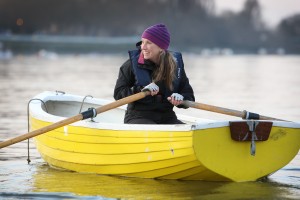 Roz Savage, the ocean rower, is appealing for opponents of a super sewer for London to take the long-term view, saying: “We need to accept some short-term pain for the long-term gain.” The 44-year-old told a House of Commons reception, hosted by environmentalist and conservative MP Zac Goldsmith, that London’s antiquated sewer network is a “disgusting embarrassment” that urgently needs tackling.
Roz Savage, the ocean rower, is appealing for opponents of a super sewer for London to take the long-term view, saying: “We need to accept some short-term pain for the long-term gain.” The 44-year-old told a House of Commons reception, hosted by environmentalist and conservative MP Zac Goldsmith, that London’s antiquated sewer network is a “disgusting embarrassment” that urgently needs tackling.
Zac said: “The existing sewer system is remarkable, given that it is 160 years old. But it needs an overhaul. We put enough raw sewage into the river to fill the Albert Hall 450 times, and that has to stop.” He added; “In addition to the environmental imperative, this project will create thousands of local jobs, and high quality apprenticeships, and contribute to getting us back on track economically.”
Roz echoed his comments and on the predicted impact of the Thames Tunnel’s construction on people living near to the river, she added: “I quite understand their concerns but sometimes you have to put up with short-term pain for long-term gain.”
The Westminster event followed a close-up inspection of one of the overflow vents.
Roz rowed under Putney Bridge to see for herself the human effluent, sanitary items and other detritus that run from the combined sewer overflow (CSO) beneath the busy Thames crossing, just yards away from riverside restaurants and prestigious rowing clubs.
Putney Bridge CSO discharges 34 times a year on average, accounting for 68,200 of the 39m tonnes of sewage that annually enters the river from the 36* most-polluting CSOs built into London’s overstretched Victorian sewer network.
Roz, the first woman to row across the Atlantic, Pacific and Indian oceans, braved London’s filthy waters in her role as ambassador for Thames Tunnel Now (TTN) – a coalition of 18 environmental groups who support the proposed Thames Tunnel, which will stop sewage entering the river.
After her trip to see the Putney sewer overflow, Roz addressed a TTN reception at the House of Commons attended by nearly 200 supporters of the project. Roz said: “It’s a disgusting embarrassment that we are dumping hundreds of thousands of tonnes of sewage into the river every week. It is also a serious health hazard and I hate to think what visitors to the Olympics will think. I’ve rowed through some pretty grim stuff on my travels but the Thames is heart-breakingly returning to the open sewer it used to be 200 years ago. The Thames Tunnel cannot come soon enough.”
As little as 2mm of rain is enough to overload the capital’s sewerage system and cause untreated effluent to spill into the river. Disease-ridden sewage discharges, which often kill fish and other wildlife, take place more than once a week on average.
The 14-mile ‘supersewer’ will take the sewage that currently enters the river away for treatment. The width of three London buses, it will run from Acton in the west to Abbey Mills in the east, according to proposals.
Debbie Leach, chief executive of environmental charity Thames21, lead agency of the TTN coalition, said: “The River Thames is the greatest open space running across London, but we are failing completely to protect it. The Thames is being ruined for the people of London as well as for the amazing wildlife that depends on it. We need to change things. The Thames Tunnel project is vital. It needs to be delivered now.”
Phil Burston, of the Royal Society for the Protection of Birds (RSPB), a TTN member, said: “The Thames Tunnel is a once in a generation opportunity to leave a sewage-free Thames as our legacy for this century and beyond. The Thames Tunnel Now coalition believes it is the only viable and cost effective way to deliver that legacy.”
Phil Stride, Thames Water’s head of London Tideway Tunnels, said: “We are in listening mode right now, midway through the second phase of our public consultation for the Thames Tunnel. We are eager to hear people’s views and concerns about how best to deliver this must-do project to clean up London’s river.”
http://www.rozsavage.com/
(Pictures by Stewart Turkington www.stphotos.co.uk)
Posted in News
Tagged Fish KIll, Pollution, Sewage, Super Sewer, TAC, Tideway Tunnel
Comments Off on Appalled ocean rower backs Thames Supersewer


